Biology > QUESTIONS & ANSWERS > BIO 1414 Exam 1 Study Guide, Complete Questions & Answers (Verified)University Of Texas - San Antoni (All)
BIO 1414 Exam 1 Study Guide, Complete Questions & Answers (Verified)University Of Texas - San Antonio.
Document Content and Description Below
BIO 1414 Exam 1 Study Guide Chapter 18-20 Test Review: Chapter 18: 1. How is the field of Biology organized hierarchically? (e.g. Molecules → Biosphere) 2. Define Evolution. How does it relate t... o natural selection? Adaptation? 3. How does Evolution fit within the discipline of Biology? Be familiar with the tree of life: What are the three Domains? Kingdoms? What are some representative organisms in each? 4. Which of the domains are prokaryotes? Eukaryotes? What are the major differences between prokaryotes and eukaryotes? 5. How is there unity in the diversity of life? 6. How do organisms adapt to their environment? Examples: aye-aye, treehopper, tardigrade, star-nosed mole, goblin shark, axolotl, pistol shrimp, yeti crab, Texas horned lizard, gulper eel, leafy sea dragon, proboscis monkey. 7. Charles Darwin How did Darwin arrive at The Origin of Species? 8. Explain what Darwin meant by 1. The unity of life; 2. The diversity of life; the match between organisms and their environment. 9. Define adaptation. How does this relate to the origin of species? 10. What did Darwin mean by Descent with Modification? 11. Artificial selection: What is this? Summarize the silver fox experiment and results. 12. How does natural selection occur? Does it create new traits? 13. Define “theory” as used in Biology. What is the “theory of Evolution”? 14. What are the four types of data that document the pattern of evolution? (i.e. direct observation, homology, the fossil record, biogeography). Provide examples of all 4. 15. Define homology. What are some classic examples of homologous structures? How is homology different than analogy? What is convergent evolution? Divergence? 16. What is a species? (e.g. biological species concept) What factors do we use when defining a species? What are some difficulties in defining a species? 17. How do new species form? What is the difference between Allopatric and Sympatric Speciation? What is vicariance? 18. In sympatric speciation, how do populations of the same species living in the same habitat evolve into two different species? 19. What factors impact reproductive isolation? What are examples of Prezygotic vs. Postzygotic barriers? (e.g. temporal isolation, behavioral isolation, habitat isolation, gametic barriers). 20. Define hybrid zone, reinforcement, fusion, and stability in the context of sympatric speciation. 21. How fast does speciation take place (i.e. what is the difference between gradualism and punctuated equilibrium)? What are common factors associated with punctuated equilibrium (e.g. small isolated populations, etc.) Chapter 19 topics (Evolution of Populations): 22. What is the difference between micro- and macro- evolution? 23. Explain why we say “populations evolve; individuals don’t”. 24. Define genotypic vs. phenotypic plasticity. 25. What is the Modern Synthesis? 26. Definitions: population, gene, allele, locus, heterozygous, homozygous, dominant, recessive, gene pool, allele frequency, genotype, phenotype. 27. Who is Gregor Mendel and what are “Mendel’s Laws” 28. When is an allele “fixed” in a population? 29. Be able to calculate allele frequencies from phenotypes (given two alleles, one dominant and one recessive) and/or given genotypes. 30. Hardy-Weinberg equilibrium: What is this? When is a population at Hardy Weinberg equilibrium? What are the Hardy Weinberg equations? What is a “Punnett square”? 31. Calculating allele frequencies using p + q= 1. 32. Calculating genotypic and phenotypic frequencies using: p2+ 2pq +q2 = 1 33. What are the five conditions for non-evolving populations? Are these met in nature? So should we just throw out Hardy-Weinberg? Why? (hint: no! a population can be evolving at some loci, but not others). 34. What are the factors that alter allele frequencies? Define these. Which causes adaptive evolution? 35. Why do we care about reduction of genetic diversity? 36. Definitions: 37. What is meant by relative vs. absolute fitness? Relative Fitness only matters in comparison to others in the population. Absolute fitness is the ratio between the # of individuals with that genotype after those selections before other selections 38. What are the various ways natural selection can affect population variation? Define and give an example of 39. What is balancing selection? Heterozygote advantage? Frequency-dependent selection? Give an example of each. 40. What is sexual selection? How do the handicap principle and good genes hypothesis fit into our theory of sexual selection? 41. Define: 42. Why can’t natural selection mold the “perfect organism”? Chapter 20 Topics (Phylogeny) 43. Define phylogeny, systematics, taxonomy. 44. Be able to name the taxonomic group from domain to subspecies. Where do people fit in? 45. What is a phylogenetic tree? What is meant by a rooted vs. unrooted tree. 46. Be able to define and identify the following on a phylogenetic tree: ancestral lineage, branch point, sister taxa, basal taxon, polytomy. 47. How do we extend phylogenetic trees beyond the fossil record? What is the molecular clock? What are a few ways in which phylogenies be applied? 48. How are evolutionary relationships determined? What is a morphological homology? A molecular homology? 49. How do we tell the difference between analogy and homology (i.e. list and explain 3 factors)? 50. What is the difference between a molecular homology and a molecular homoplasy? 51. What is cladistics? Define: Clade and monophyletic group. 52. What is the difference between a monophyletic, paraphyletic, and polyphyletic group? Which one can be considered a “clade”? 53. What is a shared ancestral character vs. a shared derived character? How can these be used in relative contexts? 54. What is an out-group vs. in-group? How do you identify an appropriate outgroup? What is the principle of maximum parsimony? How is this applied to building phylogenetic trees? 55. What is Horizontal Gene Transfer? How does it occur? How is it changing how we draw the “tree of life”? 56. What are the mechanisms by which prokaryotic HGT occurs? Define transformation, transduction, conjugation and gene transfer agents? 57. What are the ways in which eukaryotic HGT might occur? Give examples. 58. How is HGT linked to antibiotic resistance? What is the Endosymbiont Theory? How does this explain the evolution of mitochondria or chloroplasts? 59. How might the Eukaryotic nucleus have evolved? What is the difference between the Nucleus-first, Mitochondria-first, and Eukaryote-first hypotheses? [Show More]
Last updated: 1 year ago
Preview 1 out of 13 pages
Instant download
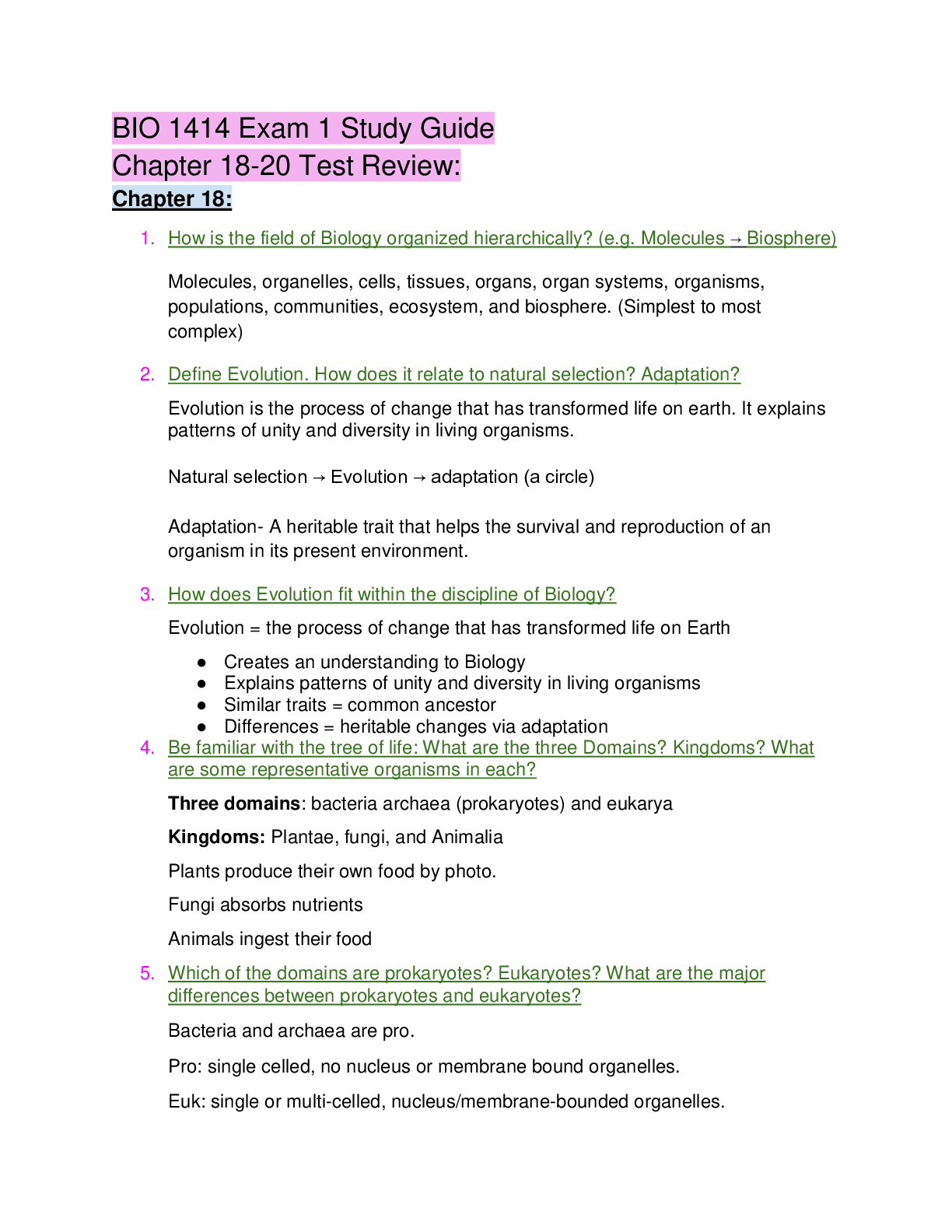
Buy this document to get the full access instantly
Instant Download Access after purchase
Add to cartInstant download
Reviews( 0 )
Document information
Connected school, study & course
About the document
Uploaded On
Mar 30, 2020
Number of pages
13
Written in
Additional information
This document has been written for:
Uploaded
Mar 30, 2020
Downloads
0
Views
70

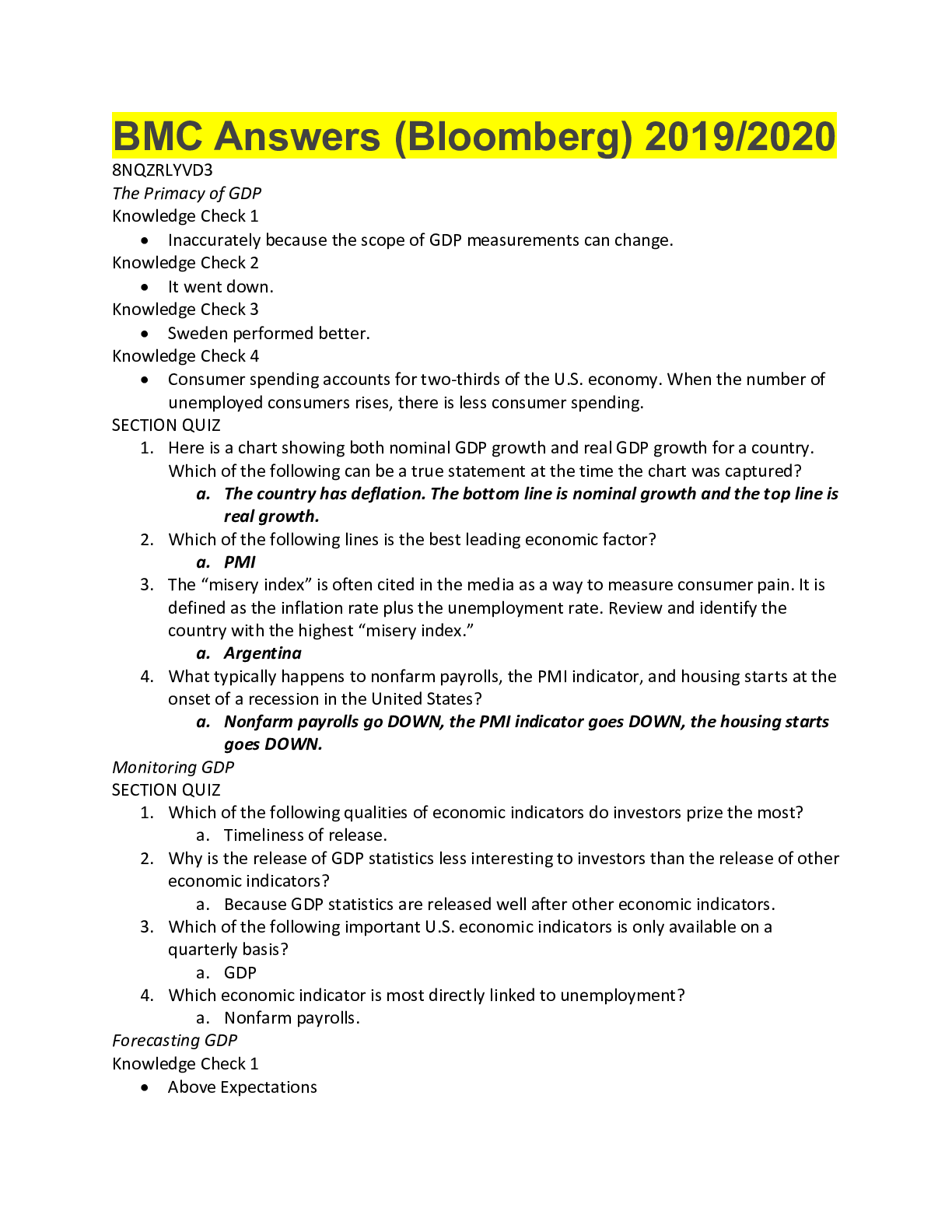
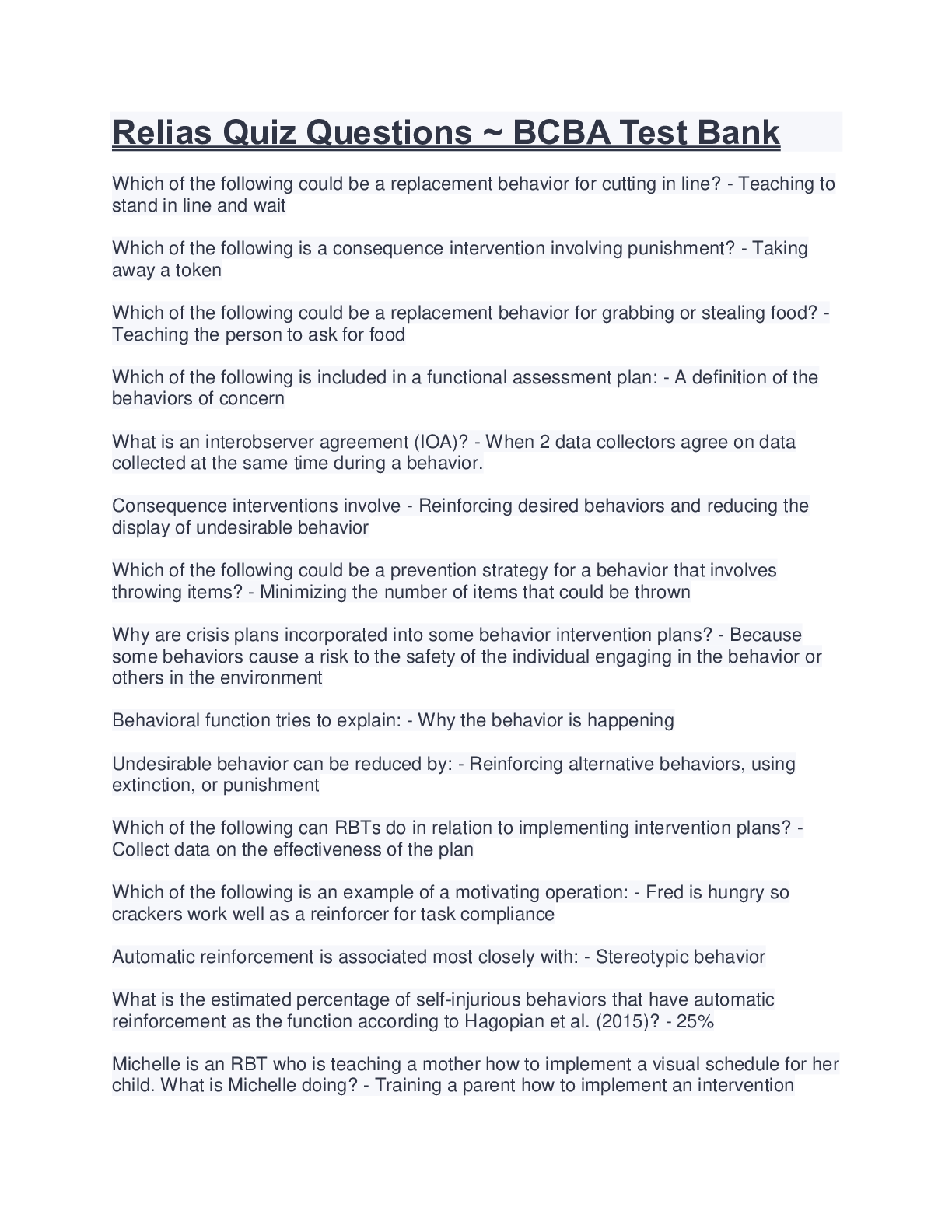
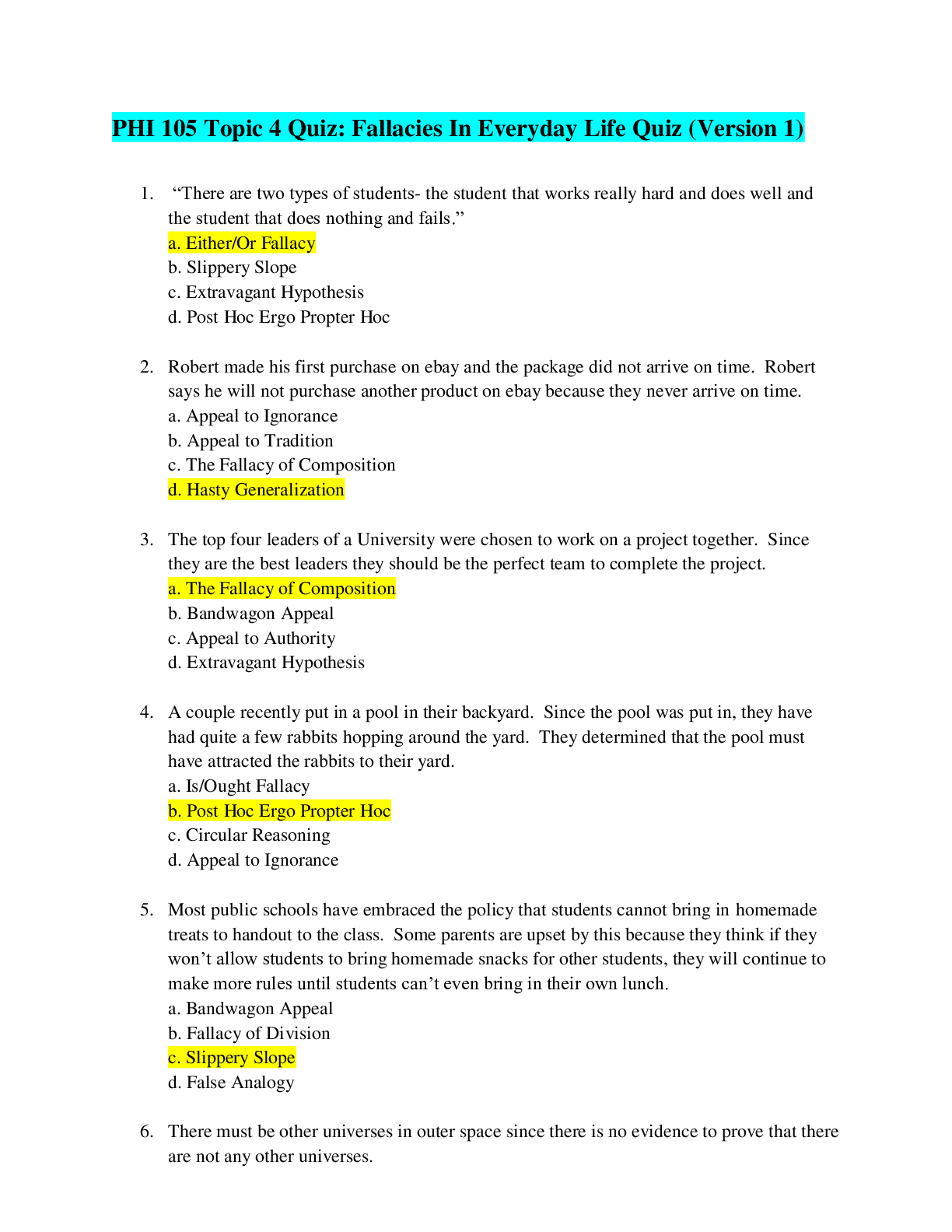


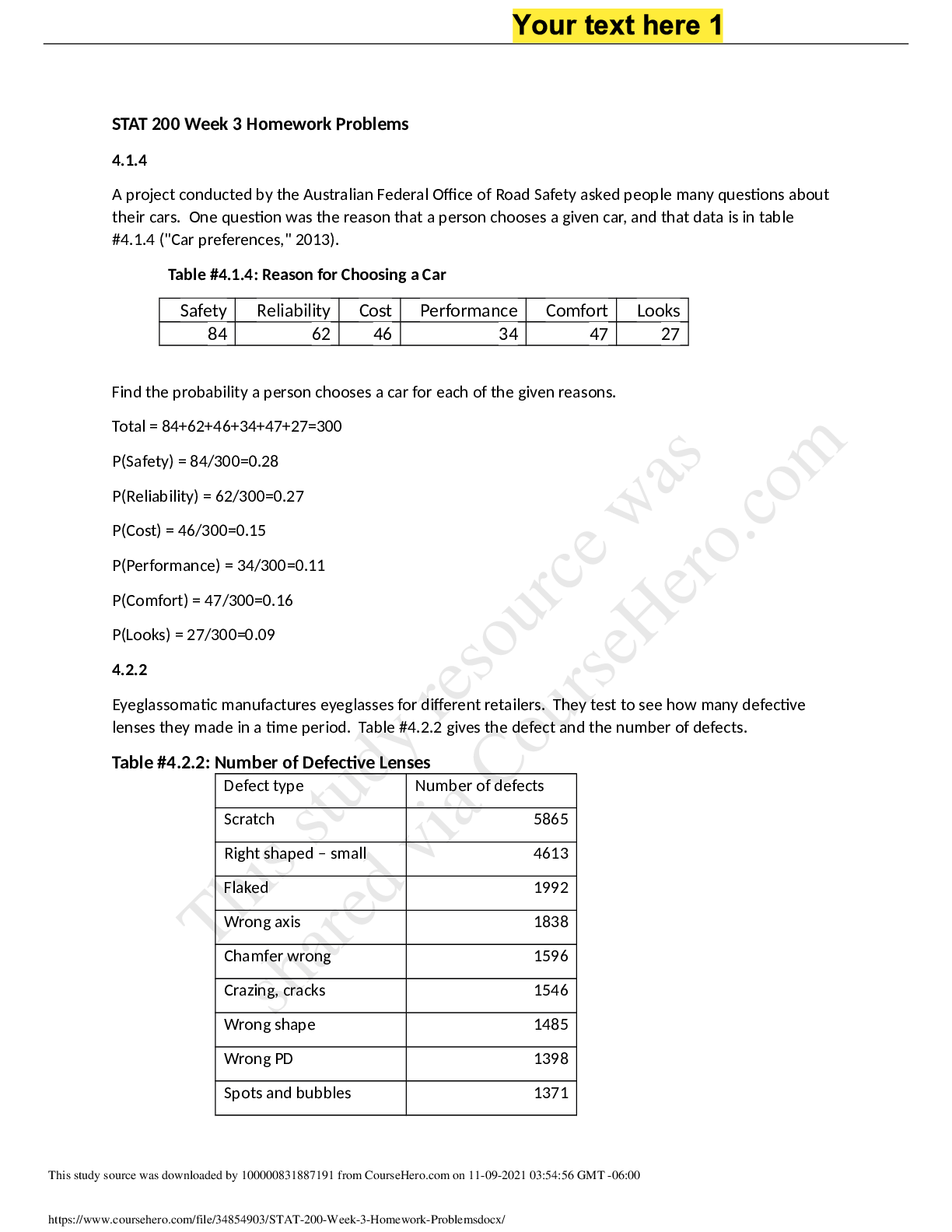

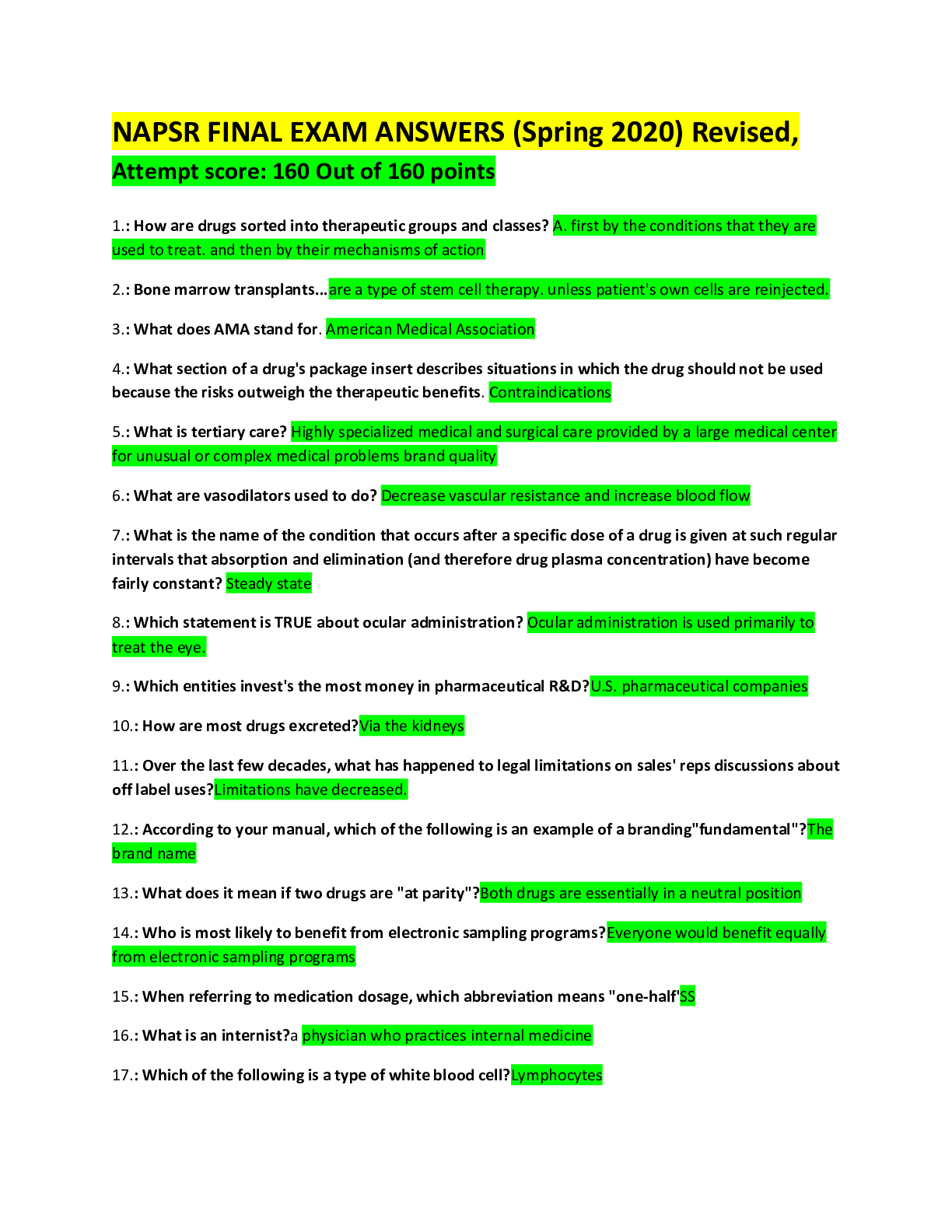

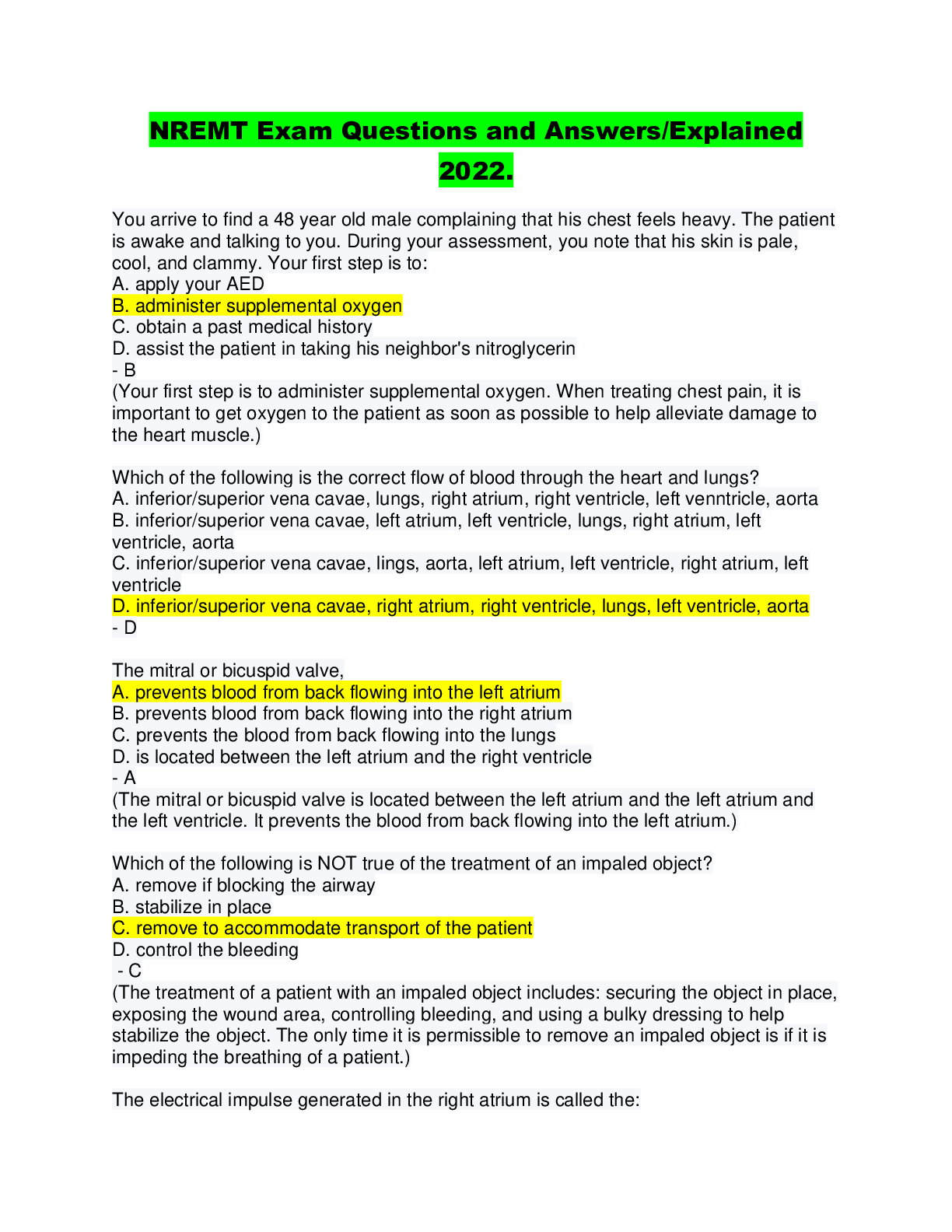
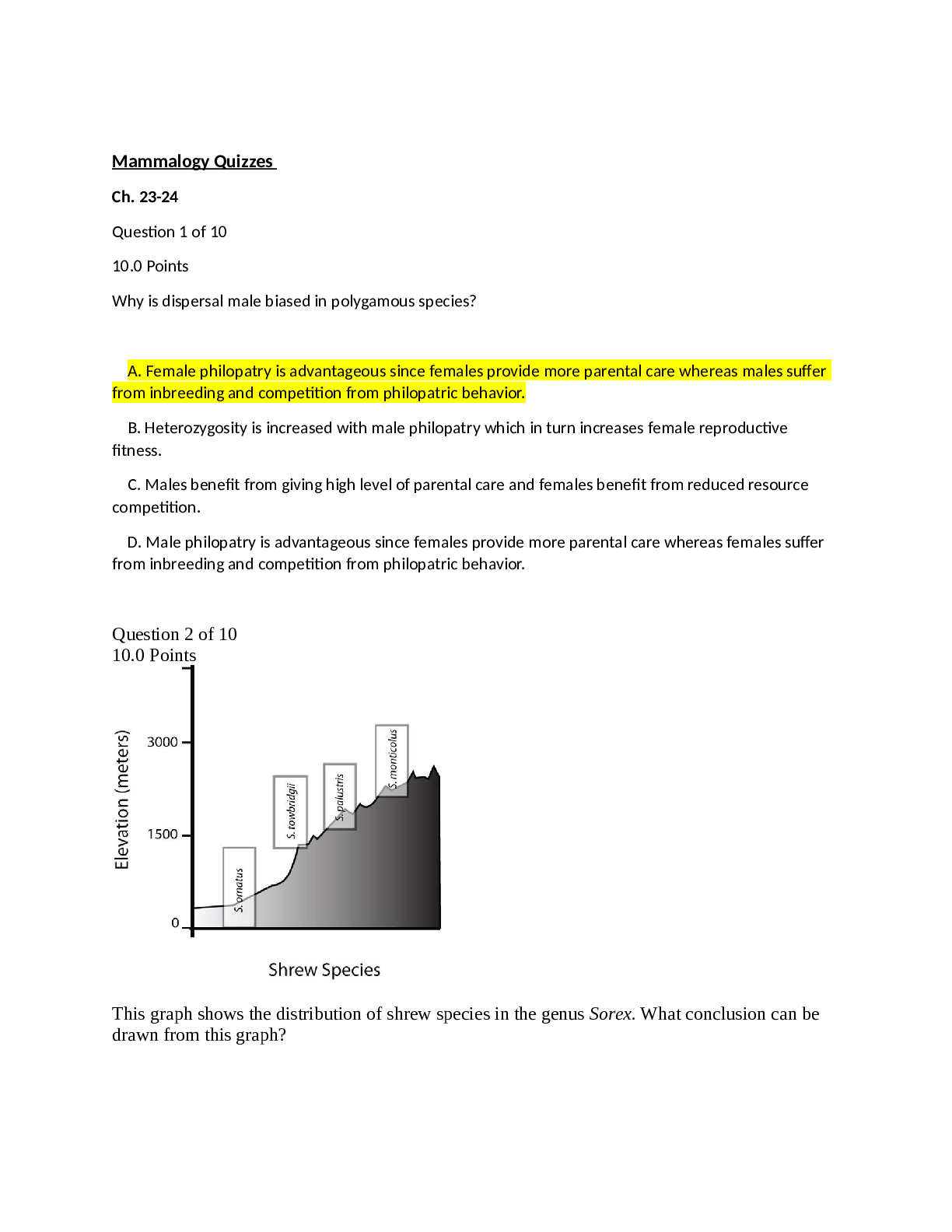
.png)
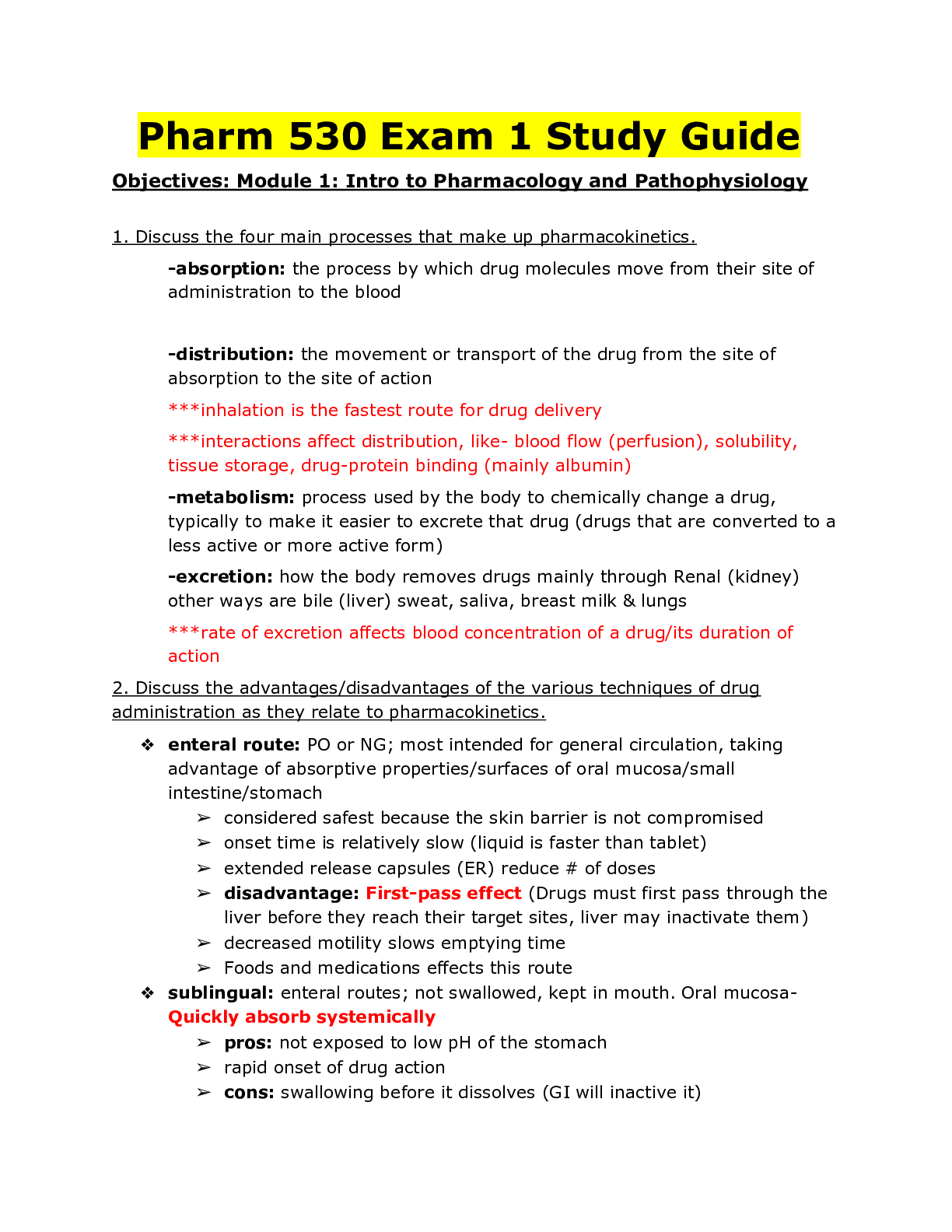

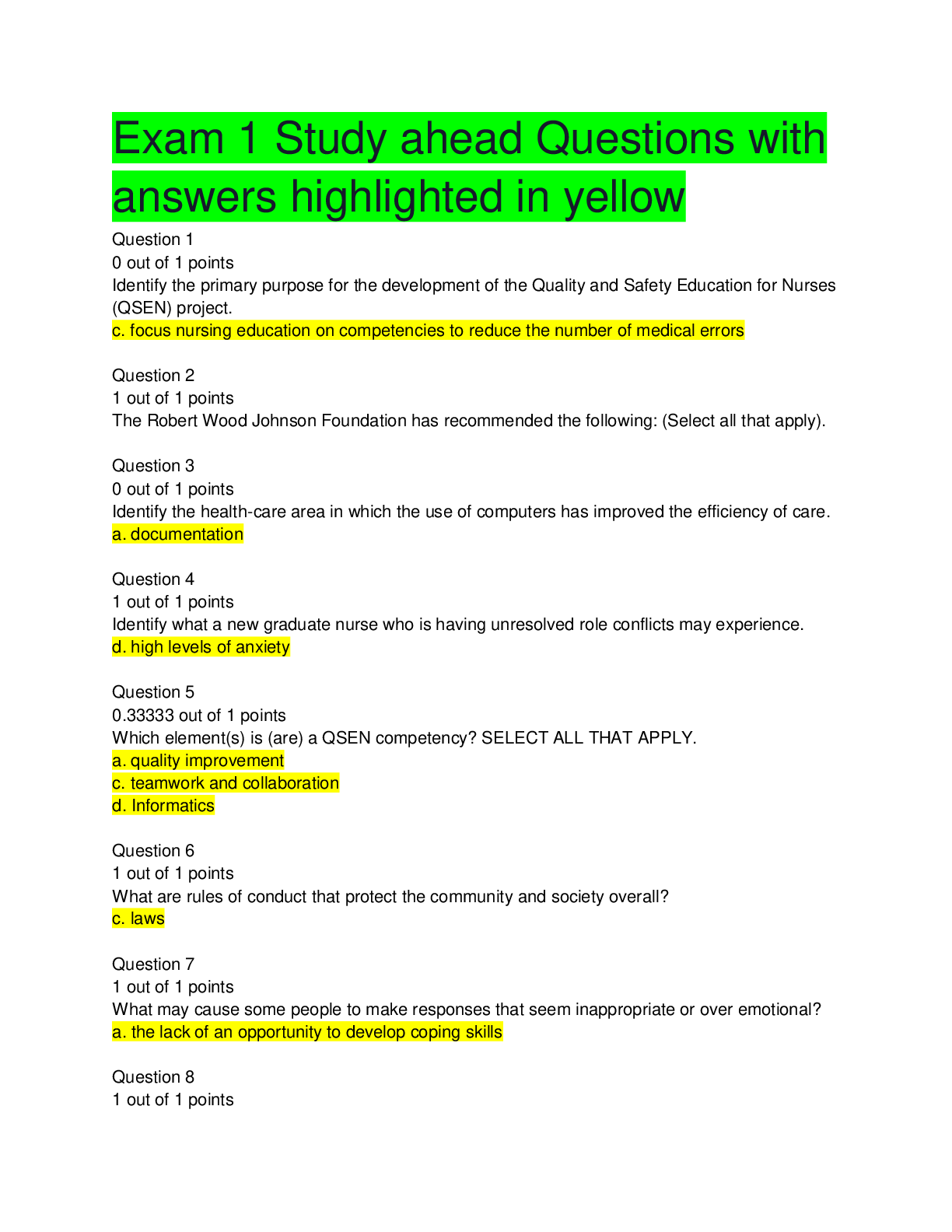
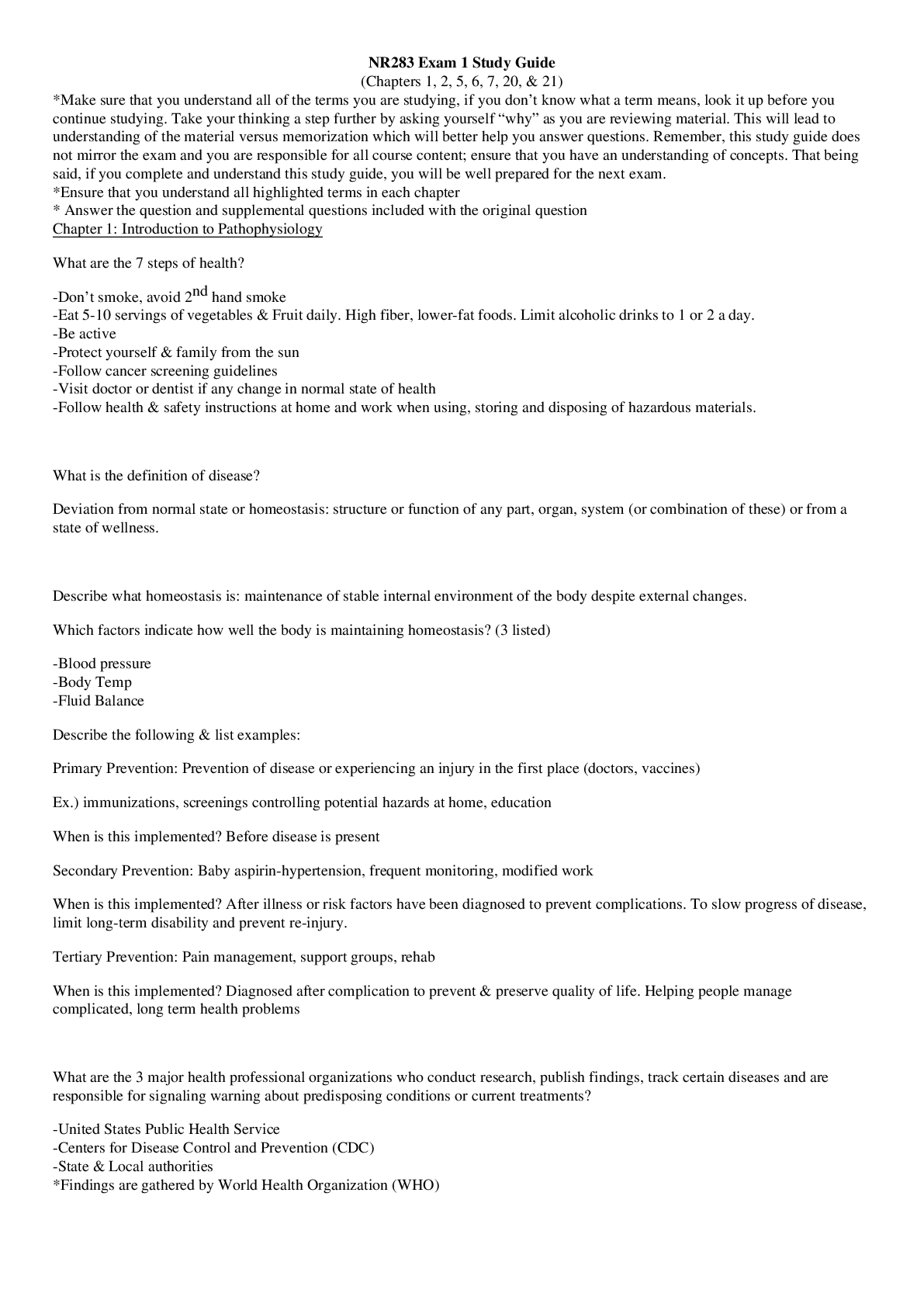
 (3).png)
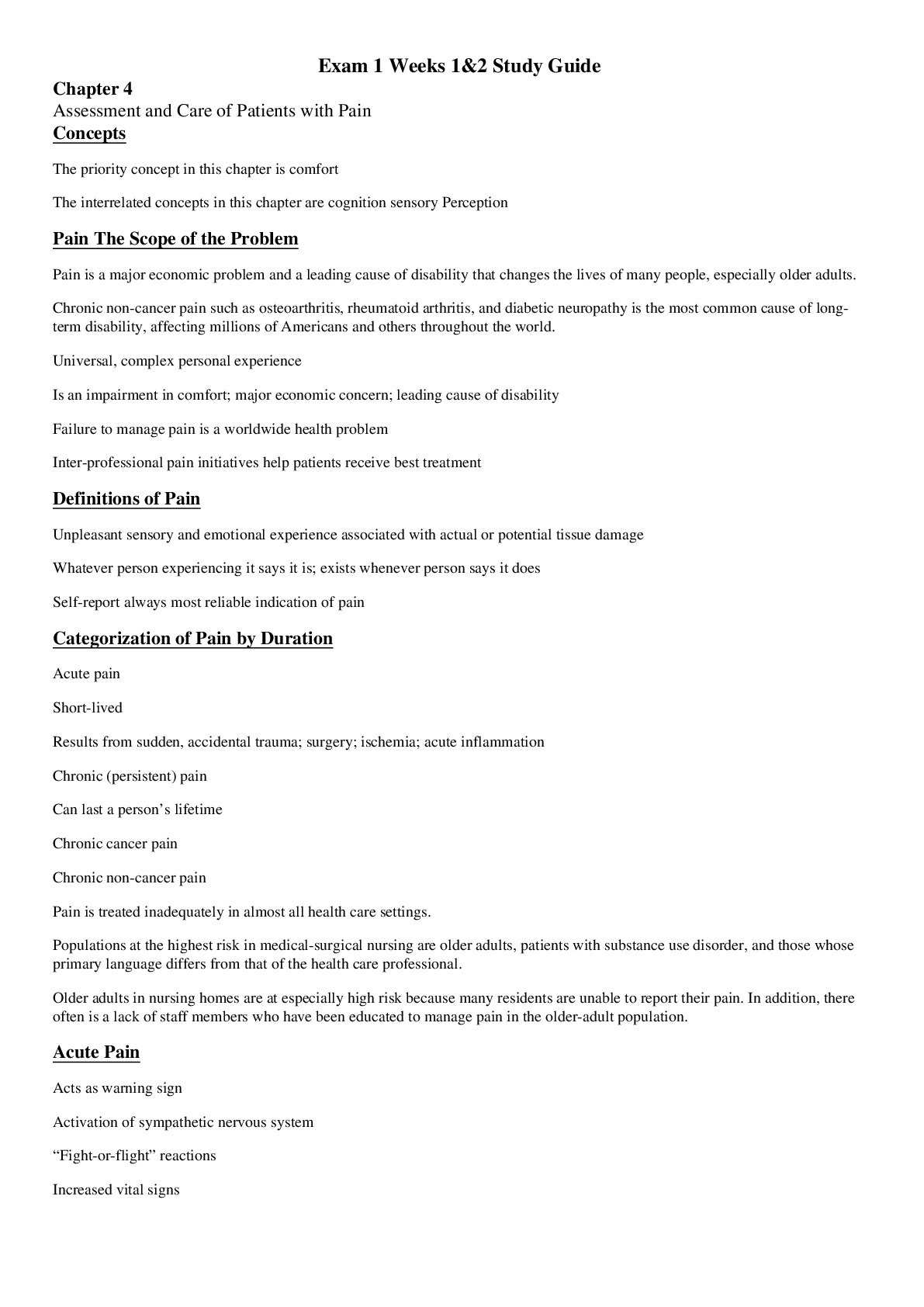
.png)

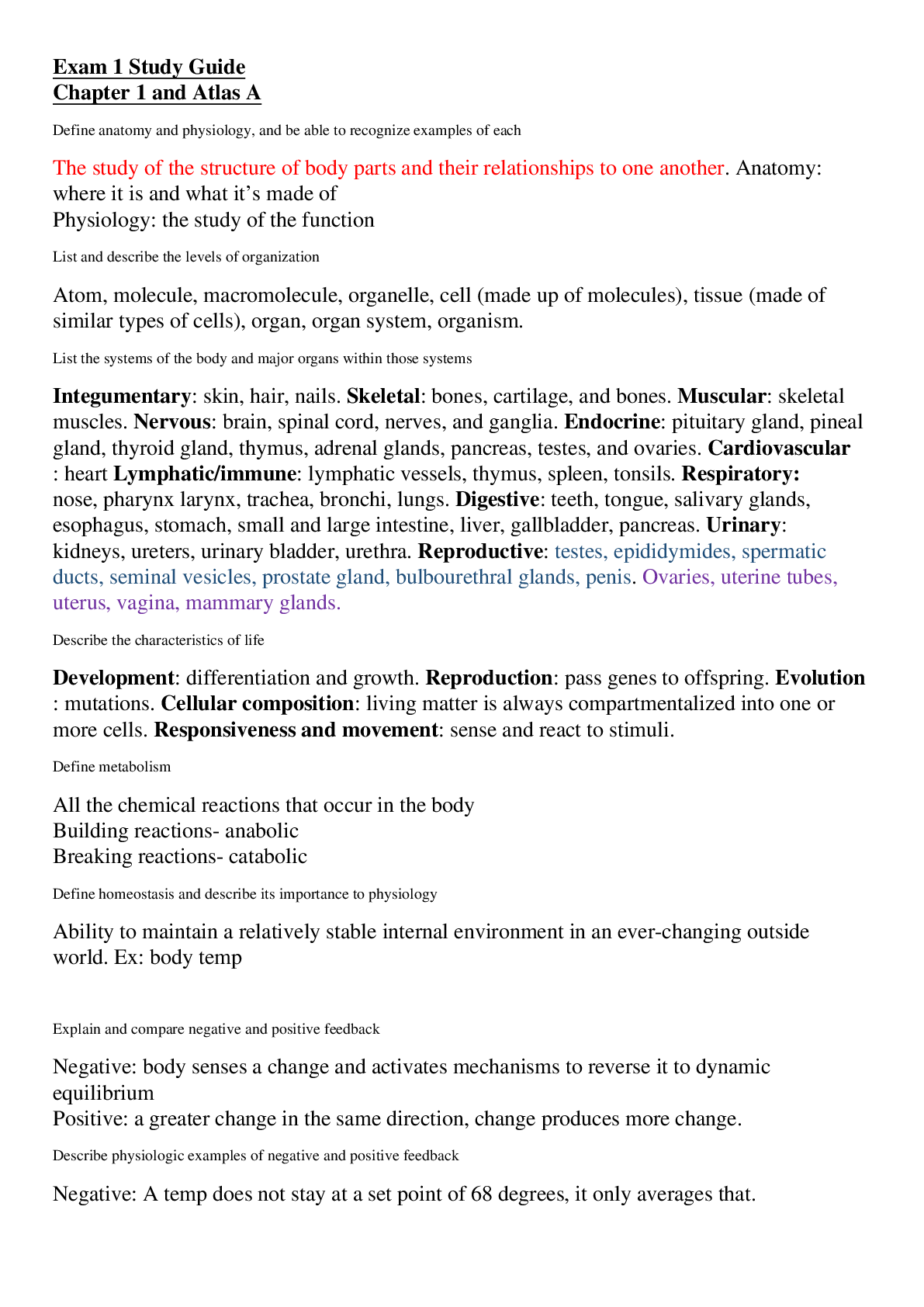
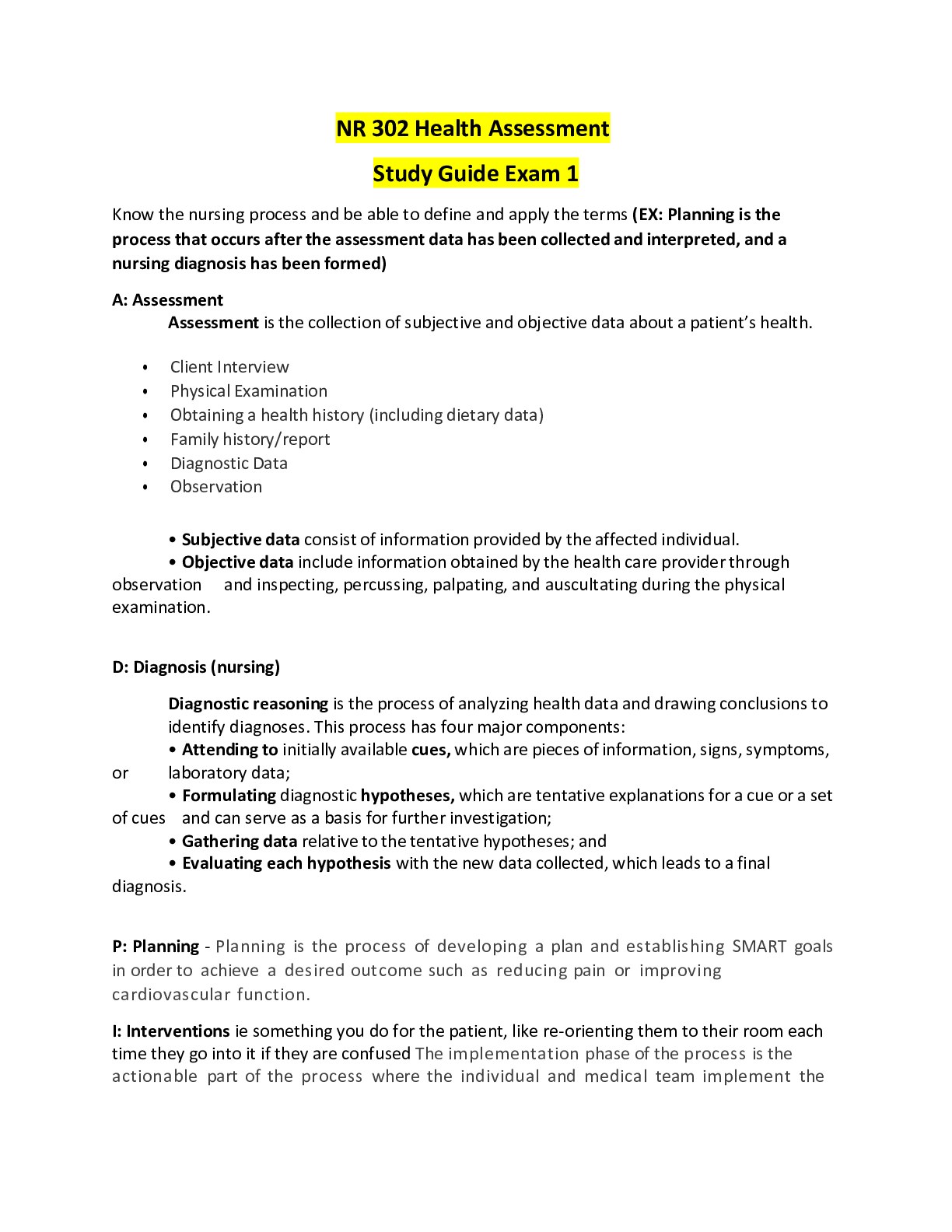
.png)
.png)

